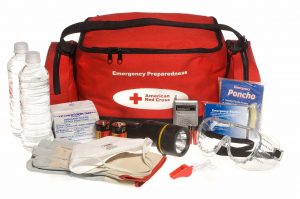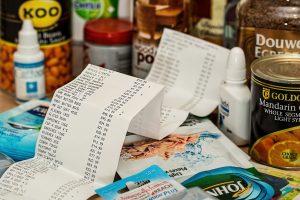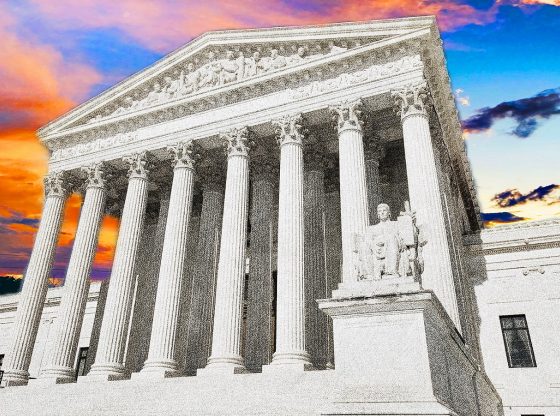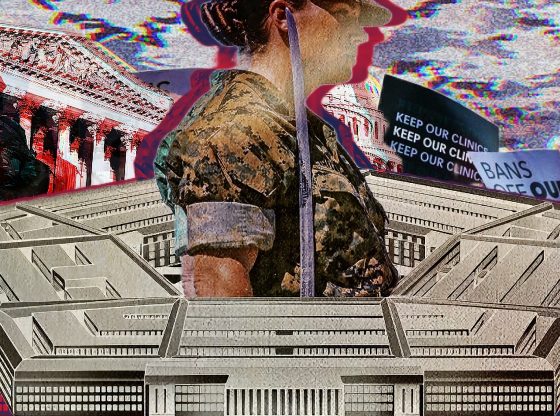Don’t Panic, But Do Be Prepared…

“Preppers” have gotten a bad rap in recent years – with the media generally focused on the fringe or extreme “Doomsday” elements. However, as recent natural emergencies, and the Wuhan Coronavirus Virus (COVID-19) pandemic is showing, maybe Preppers are on to something.
As a former Marine Corps Officer – and Boy Scout – and professional crisis manager – who also resided in hurricane-prone South Florida – Emergency Preparedness is in my DNA. But you don’t have to be a Prepper to be prepared for most emergencies.
All you need are some basics. Here are my suggestions for what everyone in America should have.
- A plan – a simple written plan on what to do and where/how to go if an evacuation is needed. Also, what to do if you need to shelter in place – as many are doing now.
- A credible, hard copy – Survival Handbook.
- Supplies – necessities to survive in isolation – possibly without power – for AT LEAST TWO WEEKS.
What supplies should you have? This is my basic (not all-inclusive) list:
The List:

- Pre-cooked foods such as soups, ravioli, meats, ham, chicken, tuna, etc. for after your regular food runs out, or power goes off.
- Dried instant foods such as oatmeal and instant breakfast powders, powdered iced tea, etc. Low salt crackers. And boxes of powdered non-fat milk.
- Some boxes of power or energy bars and bottles of protein drinks, and several large bottles/containers of drinking water.
- Lots of canned fruits, a few bottles of hot sauce and non-refrigerated condiments.
- A couple of large construction-company type orange drinking water containers to fill for bathing, etc. – if your water is lost.
- A water purification device or tablets is optional – but worth having.
- Several high-powered LED flashlights, with lots of extra batteries. Perhaps a couple of LED camping lanterns.
- A well-stocked emergency first aid kit. And several extra bottles of rubbing alcohol and hydrogen peroxide.
- Two-three months’ supply of prescription medications.
- Extra pairs of prescription and reading glasses, if applicable.
- Baby supplies if applicable.
- Few boxes of Ziploc bags and plastic tie wraps.
- An inexpensive emergency portable shortwave weather radio, with a hand crank in case batteries die.
- A pair of simple portable two-way radios with a decent range if cell phone networks go down.
- A power inverter to use with your car battery to charge small electrical items like phones, tablets, and laptops. Lots of extra batteries for other electronic items.
- Few cans of Lysol type spray disinfectant, and several alcohol-based hand sanitizers and packages of hand wipes.
- Simple antibacterial hand soaps, such as Dial. Extra toothbrushes, toothpaste and mouth wash.
- Month’s supply of toilet paper and paper towels.
- A couple of boxes of heavy-duty trash bags.
- A camping stove with fuel, in addition to any outdoor grill with extra propane, or charcoal and lighter fluid.
- Bug repellent, sunscreen, sunglasses, wide-brimmed hats, a few rolls of duct tape, a roll or two of paracord, a couple of hunting knives and perhaps a small ax and machete. A large waterproof tarp or two.
- Can of WD-40 lubricant. A decent set of tools and a Leatherman type multi-tool. Various types of work gloves.
- A couple of backpacks, water bottles, sleeping bags and tents if evacuation is needed.
- And for these biological epidemics – a couple of boxes of N-95 respirator masks, a few snug-fitting work goggles and a couple of boxes of nitrile rubber gloves.
Most of these emergency items should be kept in sealed plastic bins separate from regular supplies you may have. Marked for “Emergency Only.”
Finally, no emergency kit is complete without a reliable 9mm handgun – one you have trained to use safely – with at least two extra magazines and a few boxes of extra ammunition – since 9mm ammo is plentiful. A .38 or .357 magnum revolver is also a good reliable choice.
(If you are not comfortable with firearms – please have a decent crossbow with plenty of arrows!)
You don’t have to rush out and buy all this stuff at once. Just buy a few at a time over several months as this current crisis recedes – and recycle items to maintain them fresh.
And when the next hurricane, power outage, pandemic, cyberattack or zombie apocalypse arrives, you and your family will be safe and ready!
Paul Crespo is a defense and national security expert. He served as a Marine Corps officer and as a military attaché with the Defense Intelligence Agency (DIA) at US embassies worldwide. He holds degrees from Georgetown, London, and Cambridge Universities. Paul is also CEO of SPECTRE Global Risk, a security advisory firm, and a Contributor to American Defense News.
Advertisement
Do You Approve of Trump’s COVID-19 Response? [TAKE THE SURVEY]
















Every home should have an emergency health kit – empty out what’s in the built-in ‘medicine’ cabinet into an emergency box or pouch big enough to handle disinfectant alcohol, peroxide, everything-since that’s usually the way it is when there’s an ’emergency’ so you don’t not-have what you need, and don’t forget the scissors for butterflying if you don’t already have the butterfly bandages and tongue depressors b/c they make great splints for toes and fingers and even larger fractures if you put them in certain areas of that break – my box is an oversized ancient makeup case found on eBay and an emergency booklet in it too, and a Red ‘cross’ on it – keep it in a bathroom where it can be readily seen.
We can imagine the NYTimes not having one, they’re too busy being malicious to be of sound mind.
Nothing wrong with being a prepper. Actually, if everyone were, our present situation might still affect a lot of people, not nearly as many. We have had N95 masks and hand sanitizer for years, plenty of food and water, and yes–toilet paper, which seems to have been elevated to the top of Maslow’s Hierarchy of Needs. People are still staring at us because we are wearing masks, most mostly staying in. My questions is always, “Where is your mask?”
For sheltering in place like now, extra food and water are extremely important. Especially for the more rural areas where we have well water, and need an emergency power generation system to maintain a water supply. That’s why those 5 gal “cubes” that are sold in camping supply stores, even Wal-Mart are great, but even this, save the 1 gal ice tea or juice plastic bottles are great. You use those drinks anyway, just don’t throw the empties out. rinse and fill with water. A full size first aide kit is critical. The “tackle box” size is best. 20 years working the streets as a paramedic prepared me with many first aid supplies, including airways and “ambu bags” to ventilate those who stop breathing. Everyone should take a CPR course for many reasons, also a first aid course. Cut strips of plywood with foam from worn out pillows make great splints. besides the 9mm handgun, a hunting rifle in 2 calibers is needed. a small .22 for rabbits and squirrels, and larger for deer helps. That’s a lot of meat. Learn to dress and butcher. You don’t need to be great, you tube has good video’s, watch them. But MOST IMPORTANT. don’t wait for the emergency. do it ALL in advance. PREPARE, as be a prepper, to what ever level you feel comfortable with, but prepare in advance.